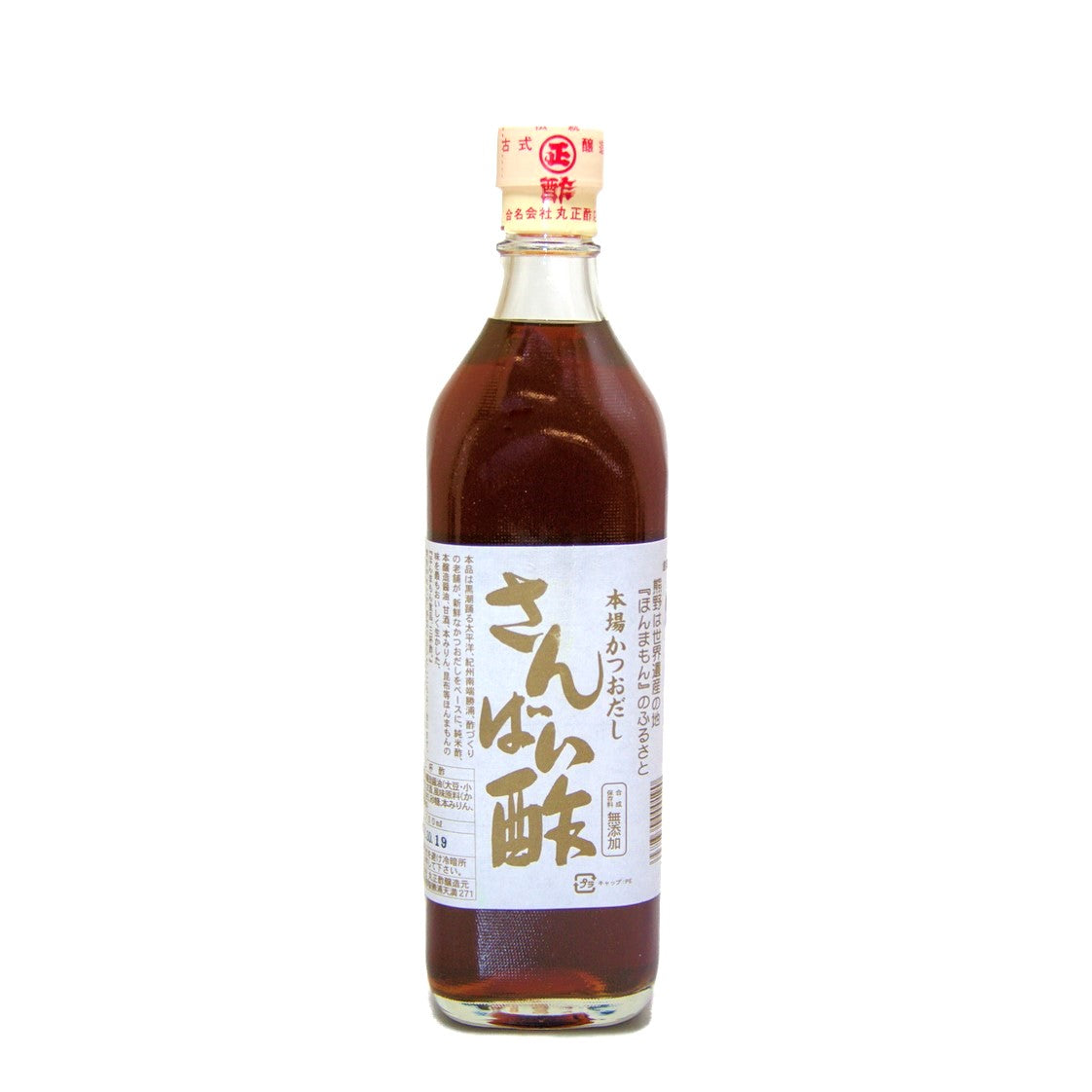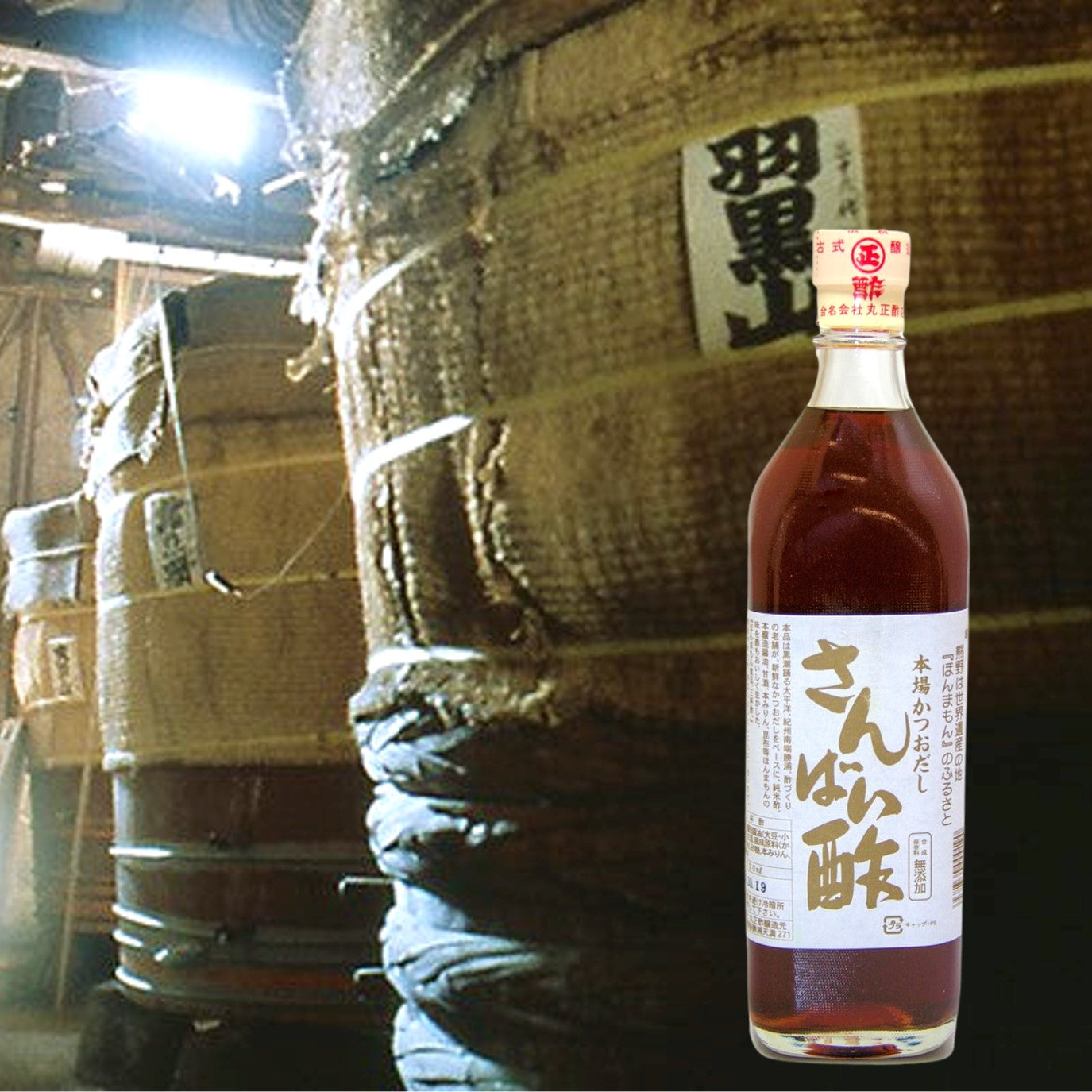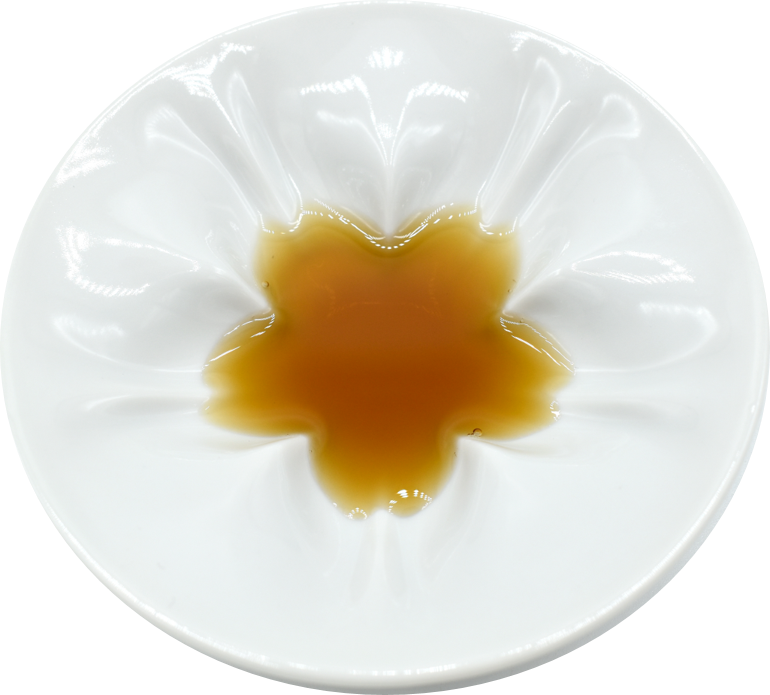300 ml
- Mild rice vinegar mixed with bonito dashi
- Made by a traditional manufacturer
- Matured in wooden barrels
- Ideal with fish and seafood
Description Sanbaizu Dashi rice vinegar
Rice vinegar mixed with Bonito Dashi and further ingredients. Very complex aroma, slightly sweet. Ideal in combination with seafood.
The photo shows the steaming of the rice

Use of Sanbaizu
- For dressings
- For marinating
- As an ingredient for other sauces
- For fish and seafood carpaccios
- For ceviche
About the manufacturer
Marusho was founded in the late Edo period in 1879 and has been producing since then finest Japanese vinegar and ponzu. Soft water from the Kumano Mountains, which they use for brewing is of particular importance to Marusho for the quality of their products. The vinegars are aged traditionally in wooden barrels made from Kumano cedar trees. In the 80s of the last century they had contact with Michio Kushi, a Japanese nutritionist who shaped the macrobiotic movement.
The photo shows the wooden barrels at Marusho. The Japanese characters you see are names of sumo wrestlers. Each barrel bears such a name as the founder of Marusho was a sumo fan. You can find a video of the manufacturing process here

Rice and dashi acidulants
Delivery within 3-5 days
Origin: Japan
Ingredients: Rice vinegar, SOYA sauce (SOY BEANS, WHEAT), amazake (rice, koji cultures), BONITO flakes, kombu algae, sugar, hon mirin (sticky rice, koji cultures, alcohol), salted mirin (sticky rice, koji cultures , Alcohol, salt)
Allergens: SOY, WHEAT, FISH
| Nutritional values | per 100 ml |
|---|---|
| energy | 276 kJ / 66 kcal |
| fat | 0.1 g |
| saturated with it | <0.1 g |
| carbohydrates | 14.6 g |
| of which sugars | 13.9 g |
| protein | 1.9 g |
| salt | 1.4 g |
Responsible entrepreneur: FoodConnection GmbH, Siemensstrasse 2, 21465 Reinbek





